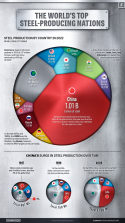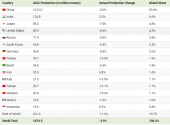This.Well, China significantly increased the college enrollments in the late '90s precisely to counter the youth unemployment issue amid economic downtown after the Asian financial crisis. The idea was to postpone the youth from joining the job market. See the following college enrollment statistics:
View attachment 112813
From 1977, the first year Chinese colleges reopened to enroll students regularly after Culture Revolution, to 1996, the total college enrollments increased less than 3.6x. From 1997 to 2016, the increase in enrollments were 7x. The increase in enrollment rate was even more staggering: from 5% to 75%.
China is not going back to double digit growth rate, not even to the "bottom line" 8% growth rate that the then Chinese premier Zhu Rongji avowed to guarantee in late '90s. China's manufacturing industry is as strong as ever, but it is moving up the ladder and will not employ a lot of people marginally relative to the working age population. The other main growth drivers, real estate and infrastructure building, have diminishing returns, to put it mildly. You should not expect them to employ as many people. Therefore, the youth unemployment issue will persist.
Until China changes its growth model significantly, that is. That's not going to be easy, but it's another subject.
Employment in mature economies is driven by services. Small and medium businesses employed 70 to 80% of youths before the pandemic crushed that sector of the economy. Talking about everything from tech. start ups to restaurants and hospitality. So it’s no wonder youth unemployment is so high.
You can’t employ everyone in manufacturing because it’s largely automated and more so every day. It’s also highly subject to the global economy. Since global demand is declining, and China already has excess capacity relative to local demand, you can’t expect the industry to create more jobs.
The answer has to be to free more money from sectors like property to improve domestic consumption, particularly services consumption. The government also needs to support small and medium businesses in services sectors more because they’re the key to youth employment.
Too much of domestic wealth is tied up in the property sector where it is doing nothing but rent collection.


